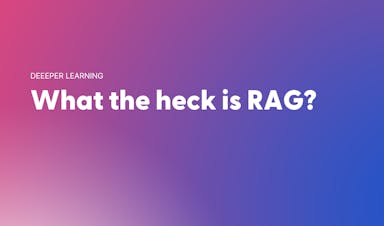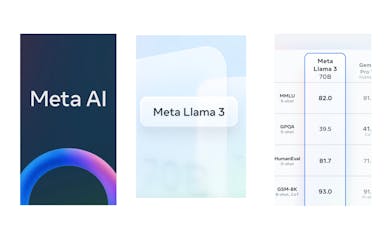Figma vs. Adobe XD: Costs and features compared in 2023

Design professionals have long relied on software to bring their visions to life. In the realm of UI and UX design, two prominent contenders have emerged as the best design tools: Figma and Adobe XD.
Both of these powerful design apps offer a plethora of features, streamlining the design process and enhancing collaboration among teams. However, despite both being some of the best interface design tools currently available, choosing the right one for your specific needs can be confusing.
In this article, we'll delve into the comparison of Figma vs. Adobe XD, exploring their key features, usability, collaborative capabilities, and more, to help you make an informed decision in selecting the ideal design companion for your projects.
What is Figma?

Figma
Figma is a cloud-based design and prototyping tool used for creating user interfaces, web designs, and app designs. It enables designers to collaborate in real-time, making it popular for team-based projects.
Figma allows multiple designers to work on a project simultaneously, providing a shared workspace where users can view and edit designs in real-time. This real-time collaboration feature makes it easy for teams to communicate and iterate on designs efficiently.
Figma: At a glance
Key features: Vector-based editing, Real-time collaboration, Cloud-based storage, Prototyping, Version history and commenting, Countless plugins and integrations
Best for: UI designers, Product designers, remote teams, front-end developers
Cost: Figma’s starter version is completely free. Their paid plans begin at $12 per editor per month for advanced features.
Pros of Figma
Real-time collaboration
Figma's real-time collaboration feature allows multiple designers to work together simultaneously on the same project. This fosters seamless teamwork, enhances productivity, and facilitates instant feedback and communication between team members. It's particularly useful for remote teams or designers working in different locations.
Cross-platform compatibility
Figma works on both macOS and Windows operating systems, making it highly accessible to designers regardless of their preferred platform. This cross-platform compatibility enables smooth collaboration among team members using different operating systems.

Vector editing and scalability
Figma's vector-based editing tools allow designers to create precise and scalable designs. Vector graphics retain their quality at any resolution, making it easy to adapt designs for different screen sizes and devices without compromising clarity.
Design systems and component libraries
Figma supports the creation of design systems and component libraries, which are collections of reusable UI elements and styles. Designers can create consistent and cohesive designs by using these components, leading to faster design iterations and ensuring a unified user experience across projects.

A library that exists in a single file in Figma
Cons of Figma
Poor performance with large files
Working on large and complex design files in Figma might lead to performance issues, especially if the internet connection is not strong. Some users have reported slower load times and lag when handling substantial design projects.
Steep learning curve for beginners
While Figma is generally considered user-friendly, newcomers to the tool may experience a learning curve, especially if they are transitioning from other design software. Getting acquainted with Figma's interface and unique features may take some time.
Mobile app is not as full-featured as the desktop app
The Figma mobile app is a great way to collaborate on designs on the go, but it is not as full-featured as the desktop app. This can be a problem if you need to use all of Figma's features while you don’t have a computer with you.
What is Adobe XD?

Adobe XD
Adobe XD is a vector-based design tool for web and mobile applications. It is developed and published by Adobe Inc., and is available for macOS and Windows. There are also versions for iOS and Android to help preview the result of work directly on mobile devices.
Adobe XD is a powerful tool for creating wireframes, prototypes, and high-fidelity designs. It has a wide range of features, including vector drawing tools, interactive prototypes, components, symbols, artboards, and collaboration.
Adobe XD is a great tool for both beginners and experienced designers. It is easy to learn, but it also has a lot of power and flexibility. If you are looking for a tool to help you create beautiful and interactive designs, Adobe XD is a great option.
Adobe XD: At a glance
Key features: Artboard-Based Design Workflows, Prototyping, Repeat Grid, Asset Export, Adobe Creative Cloud Integration.
Best for: Wireframing and Mock Ups, Design handoff between teams, Design Agencies, Interactive UI experiences.
Cost: Without a Creative Cloud Membership, Adobe XD is priced at USD $9.99/month.
Pros of Adobe XD
Seamless integration with Adobe Ecosystem
As part of the Adobe Creative Cloud suite, Adobe XD seamlessly integrates with other Adobe apps like Photoshop and Illustrator, enabling smooth workflow transitions and easy asset sharing.
Voice prototyping
Adobe XD supports voice prototyping, which allows designers to create interactive voice-based experiences and design for voice-activated interfaces. This means that designers can create prototypes of voice-activated apps and devices, and test them with users to get feedback.
This can help designers to improve the usability and functionality of their designs. Additionally, voice prototyping can help designers to create more engaging and interactive experiences for users.

Voice prototyping in Adobe XD
Responsive design
Adobe XD's responsive design features facilitate the adaptation of designs to different screen sizes and orientations, ensuring a consistent experience across various devices.
Simplified design handoff process
Adobe XD simplifies the design-to-development handoff process by generating design specifications with measurements, colors, and CSS properties, making it easier for developers to implement the designs accurately and reducing potential miscommunication between designers and developers.
Cons of Adobe XD
No CSS export feature
The absence of a CSS export feature is a significant drawback of Adobe XD. Unlike some other design tools, Adobe XD does not provide a direct and built-in way to export CSS code from the design files.
Without a CSS export feature, designers and developers may have to resort to manual methods or rely on third-party plugins to extract CSS code, which can be time-consuming and less accurate. This limitation in Adobe XD may slow down the design-to-development workflow, too.
Offline collaboration limitations
Adobe XD relies on the Creative Cloud for saving and sharing files, which might pose challenges for designers in areas with limited internet access or during internet outages. The lack of true real-time collaboration may also hinder efficient teamwork for remote teams.

Cloud documents in Adobe XD
Limited animation capabilities
Adobe XD does offer some basic animation features, but they are not as robust as the animation capabilities of other design software, such as Sketch or Figma. This can be a limitation for designers who need to create complex animations.
Expensive
Adobe XD is a subscription-only software, and the price can be a barrier for some designers, especially those who are working on a budget.
Is Figma or Adobe XD easier to learn?
Some designers find Figma's browser-based interface and real-time collaboration more intuitive, enabling quicker adaptation. On the other hand, designers familiar with Adobe's ecosystem may find Adobe XD's interface and tools easier to grasp.
If you are a complete beginner, Adobe XD may be easier for you to learn due to their simple artboard-style interface; however, it is worth emphasizing that Figma offers way more features and customization options. Ultimately, the ease of learning each tool may vary based on your personal preferences, previous experience with design software, and the specific requirements of the design project at hand.

Adobe
Figma vs Adobe XD: Which is better?
Figma outperforms Adobe XD in terms of collaboration, accessibility, design capabilities, and pricing, solidifying its position as the preferred design tool in this comparison. Its browser-based interface offers great accessibility, enabling designers to work on projects from any device without installation hassles.
In contrast, Adobe XD relies on native applications, limiting its flexibility and accessibility. Figma is also superior when it comes to real-time collaboration, as it is one of their biggest strengths.
Additionally, Figma's vector editing capabilities provide more precise design control, ensuring scalability without quality loss, while Adobe XD's vector handling has been critiqued for being less intuitive or powerful.
Lastly, Figma's pricing structure is more cost-effective, offering a free plan for individual users and reasonable subscription tiers for teams, making it a budget-friendly choice.
Why don’t you try both and see which tool you like more? Make sure to leave a comment below explaining the reason behind your choice!
Comments (4)
Larry Hartman@empowered
Hi Ayush - please email me at Larry@pixelfreestudio.com. I'd like to discuss your article, when you have a chance.
Share
If you're looking to decide between Figma and Adobe XD for UI and UX design, your article offers helpful insights. It is well-written and heic to jpg provides a full analysis of both technologies, assisting users in making a choice based on their unique needs.
I prefer Figma. Honestly, Adobe products seem to me a little bit oldish. 😅 They have good software, but Figma is like PS, Il, and something from other Adobe tools in one kit. 🙂
I can say that I have used both. I have nothing against adobe, but it is more comfortable for me to work in Figma. When I asked for it assignment help in the courses, I found https://essays.edubirdie.com/it-... for this, I was also told that it is better to use figma. Although the latest rumors are that adobe bought figma and this is sad news for me. I have already seen the changes that have appeared and I clearly do not like them.
More stories

Aaron O'Leary · News · 4 min read
Q&A: What the heck is RAG?

Sarah Wright · News · 3 min read
Q&A: What makes AI models hallucinate?

Kyle Corbitt · How To · 3 min read
What we've learned in 3 days of Llama 3

Aaron O'Leary · Announcements · 2 min read
Introducing Shoutouts

Finn Lobsien · Opinions · 5 min read
Can Devin AI Replace Product Managers?

